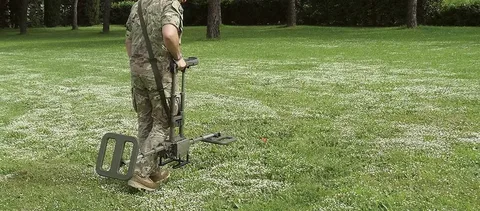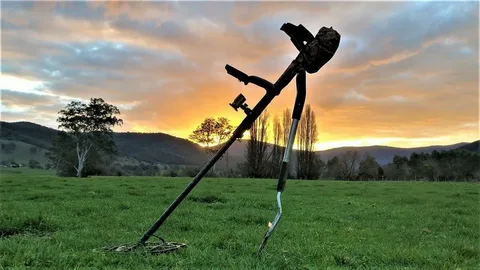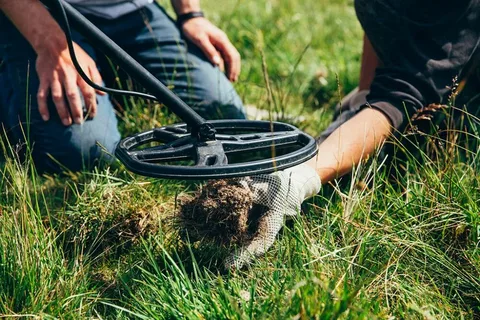Mining is a crucial industry that provides essential resources for various sectors. From precious metals to minerals and coal, the process of mining involves uncovering hidden treasures beneath the earth's surface. In this comprehensive guide, we will delve into the intricate method of mining, uncovering its secrets and exploring the key processes involved. Join us on this journey as we gain a deeper understanding of the fascinating world of mining.
"Uncovering the Secrets of Mining: A Comprehensive Guide" is a detailed and informative book that delves into the world of mining. It covers a wide range of topics including the history of mining, different types of mining processes, mining equipment and tools, safety practices, environmental impact, and future trends in the mining industry. This comprehensive guide is suitable for anyone interested in learning more about the mining industry, whether they are professionals in the field or simply curious individuals. With its in-depth coverage and insightful content, "Uncovering the Secrets of Mining" is a valuable resource for gaining a better understanding of the fascinating world of mining.
"Uncovering the Secrets of Mining: A Comprehensive Guide" is an in-depth exploration of the mining industry, covering topics such as the history of mining, various mining processes, equipment and tools, safety protocols, environmental impact, and future trends. The book is designed to be useful for professionals in the field as well as those interested in learning more about mining. It offers valuable insights into the industry and its practices, making it a valuable resource for anyone looking to understand the complexities and nuances of mining.
Exploring the Various Methods of Mining

The method of mining refers to the different techniques and processes used to extract valuable minerals or other geological materials from the earth. These methods can vary widely depending on factors such as the type of deposit, location, and economic viability. Surface mining, for example, involves removing topsoil and rock to access the underlying deposits, while underground mining requires tunnelling and shafts to reach the resources. Regardless of the specific method used, mining operations must consider environmental impacts, safety regulations, and sustainability practices in order to minimize negative effects and adhere to industry standards. Technology and innovation continue to play a crucial role in developing more efficient and responsible mining methods, providing opportunities for advancements in the industry.
Mining is the process of extracting valuable minerals or other geological materials from the earth. There are several different methods of mining, each with its own set of advantages and disadvantages. Some common methods of mining include surface mining, underground mining, and solution mining. Surface mining involves removing the top layer of the earth to access the minerals underneath. This method is often used for materials such as coal, sand, and gravel. Underground mining, on the other hand, involves digging tunnels and shafts to access the minerals buried deep within the earth. This method can be more dangerous and expensive than surface mining, but it is often necessary for accessing valuable resources such as gold, silver, and diamonds. Solution mining is another method that involves using chemical solutions to dissolve and extract the desired minerals from the earth. This method is often used for extracting salt and potash. In addition to these traditional methods, there are also newer, more advanced mining techniques such as hydraulic fracturing (fracking) and in-situ mining. These methods are often used for extracting oil and natural gas, as well as certain minerals. Overall, the choice of mining method depends on a variety of factors including the type of mineral being mined, the depth and location of the reserves, and environmental and safety considerations. Each method comes with its own set of benefits and challenges, and it's important for mining companies to carefully consider their options before beginning any new mining operation.
The Evolution of Mining Techniques

The evolution of mining techniques has been a gradual process that has been shaped by technological advancements and changing societal needs. From the early days of basic hand tools and manual labor, to the use of explosives, heavy machinery, and advanced drilling techniques, mining has undergone significant changes over time. One of the most significant developments in mining techniques has been the introduction of industrial machinery. These machines have increased the speed and efficiency of mining operations, allowing for greater volumes of material to be extracted in shorter time frames. Additionally, the use of advanced drilling techniques has enabled miners to reach deeper deposits and extract resources that were previously inaccessible. Environmental and safety considerations have also played a significant role in shaping the evolution of mining techniques. There is a greater emphasis on sustainable, environmentally friendly mining practices, as well as the implementation of safety protocols to protect workers and local communities. Overall, the evolution of mining techniques has been driven by a combination of technological advancements, changing societal needs, and environmental and safety concerns. As the demand for natural resources continues to grow, it is likely that mining techniques will continue to evolve in the future to meet these challenges.
Comparing Surface Mining vs. Underground Mining

Surface mining involves the extraction of minerals and other materials from the surface of the Earth, often through the use of heavy machinery and explosives. This method is typically used for extracting materials such as coal, limestone, and phosphate. On the other hand, underground mining involves the extraction of minerals and materials from beneath the Earth's surface. This method is often employed when the desired materials are located deep underground and cannot be easily accessed via surface mining. Some key differences between surface and underground mining include the environmental impact, safety considerations, and cost. Surface mining can cause significant environmental damage due to the disruption of the land and ecosystem, while underground mining typically has less of an impact on the surface environment. In terms of safety, underground mining can be more hazardous due to the potential for cave-ins, gas leaks, and other underground hazards. Surface mining, while still posing certain risks, is generally considered to be safer for workers. Cost is also a factor to consider when comparing surface and underground mining. Surface mining is typically more cost-effective and efficient, as it requires less manpower and equipment compared to underground mining. However, underground mining may be the only option for accessing certain mineral deposits. Overall, the choice between surface mining and underground mining depends on various factors such as the type and location of the mineral deposits, environmental considerations, safety concerns, and economic feasibility.
The Environmental Impacts of Modern Mining Methods

Modern mining methods have significant environmental impacts due to the extraction process, waste disposal, and potential pollution of nearby water sources. Open-pit mining can result in deforestation, habitat destruction, and soil erosion. The use of heavy machinery and explosives can release harmful emissions and particulate matter into the air, contributing to air pollution. Additionally, the disposal of tailings and waste rock can contaminate surrounding soil and water with heavy metals and chemicals, impacting local ecosystems and water quality. To mitigate these impacts, it is essential for mining companies to implement sustainable practices and adhere to strict environmental regulations.
Understanding the Process of Hydraulic Mining
Hydraulic mining, also known as hydraulicking, involves the use of high-pressure water jets to dislodge and transport rock material. This process is typically used to extract materials such as gold, silver, and tin from gravel deposits. Hydraulic mining can result in significant environmental impacts, including erosion, siltation of rivers and streams, and the release of heavy metals into the environment. Due to these concerns, hydraulic mining has been largely banned in many areas. Understanding the process of hydraulic mining can help in addressing its environmental and social implications.
Implementing Sustainable Practices in Mining
Implementing sustainable practices in mining involves adopting strategies and technologies that minimize environmental impact, conserve resources, and prioritize the well-being of surrounding communities. This can include the use of renewable energy sources, water conservation measures, land rehabilitation programs, and responsible waste management. Additionally, companies can work to engage with and support local communities, and ensure that their operations are conducted ethically and transparently. By embracing these practices, mining companies can work towards a more sustainable and socially responsible approach to resource extraction.
The Role of Technology in Modern Mining Methods
Modern mining methods rely heavily on technology to improve efficiency, safety, and environmental impact. Advanced equipment and machinery have allowed for more precise and targeted extraction of minerals, reducing the need for extensive surface disturbance. Additionally, technologies such as GPS and remote sensing have improved the accuracy of exploration and surveying, minimizing the potential for wasted resources. Automation and robotics are also increasingly utilized for tasks that are dangerous or labor-intensive, improving worker safety and productivity. Furthermore, advancements in data analytics and monitoring systems have enabled better control and management of environmental impacts, ensuring that modern mining operations are conducted in a sustainable manner. Overall, technology has played a crucial role in revolutionizing the mining industry, making it more efficient, safer, and environmentally responsible.
Adapting Mining Methods to Geographic Constraints
Adapting mining methods to geographic constraints involves evaluating the physical landscape and environmental factors to determine the most effective and sustainable approach to extracting resources. This may include adjusting the type of mining equipment used, modifying extraction techniques, and implementing additional safety measures to address specific challenges posed by the geographical location. Geographic constraints can vary widely and may include factors such as terrain, climate, water availability, and proximity to local communities or sensitive ecosystems. By carefully considering these constraints, mining operations can minimize their environmental impact and ensure the safety of workers while still effectively accessing valuable resources.
Training and Education in Safe Mining Practices
Training and education in safe mining practices are essential for ensuring the well-being of miners and preventing accidents. This type of training typically covers topics such as hazard recognition, emergency procedures, equipment operation, and regulation compliance. It may also include practical hands-on training in the field to reinforce theoretical concepts. Additionally, ongoing education is important to keep miners and mining operations up to date with the latest safety regulations and best practices. This may involve regular refresher courses, workshops, or other forms of continuing education. Ultimately, a comprehensive approach to training and education in safe mining practices is crucial for creating a safe and productive work environment in the mining industry.
Maximizing Efficiency through Advanced Mining Techniques
Maximizing efficiency through advanced mining techniques involves utilizing cutting-edge technology, data analytics, and automation to optimize various aspects of the mining process. This includes leveraging real-time data and monitoring systems to improve operational decision-making, implementing autonomous equipment to increase productivity, and integrating sustainability practices to minimize environmental impact. Additionally, advanced mining techniques also encompass the utilization of virtual and augmented reality for training and simulation, as well as adopting innovative drilling and extraction methods to access hard-to-reach mineral deposits. Overall, these advanced techniques are aimed at enhancing operational efficiency, safety, and sustainability in the mining industry.

0 Comments